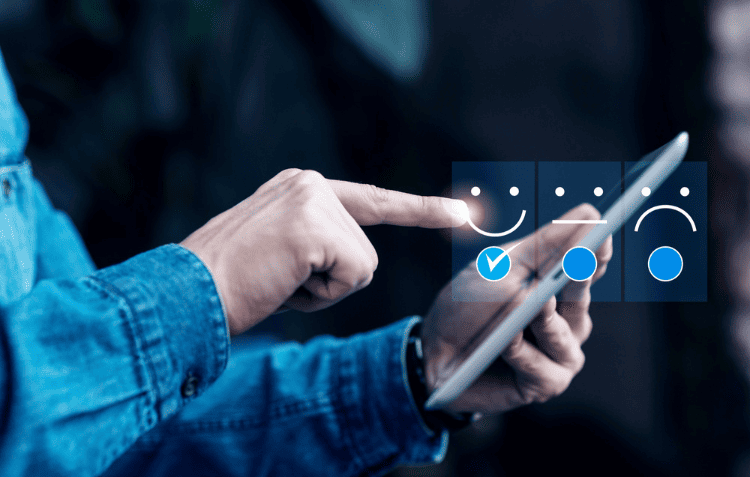Blockchain Applications: Proven Strategies and Uses in 2025
Introduction
Blockchain technology has come a long way. It’s no longer just about cryptocurrency. Today, “blockchain applications” are making big changes across many industries. They’re helping companies improve how they work, making things safer, faster, and clearer. From banking to healthcare, blockchain is being used in ways that bring real benefits. This article will explore the top blockchain applications in 2025 and show how different industries are using it to solve real problems.
What Is Blockchain?
Before diving into specific uses, it’s important to understand what blockchain is. Simply put, a blockchain is a digital record that keeps track of transactions. It’s spread out over many computers, which makes it hard to change or hack. Each time something is recorded, it goes into a “block.” These blocks are linked together in a chain, and this is what makes it hard for anyone to mess with the data. The main features of blockchain are its ability to work without a central authority, keep data secure, and reach agreements through special rules that confirm transactions. This makes it great for keeping data safe and reliable.
Top Blockchain Applications in 2025
1. Banking and Payments
Blockchain first made a big impact in banking. It’s changed how money is sent and received. With blockchain, people can transfer money faster, more cheaply, and more securely. Traditional payment systems—especially for sending money overseas—often take a long time and cost a lot because of middlemen. Blockchain gets rid of these extra steps by allowing direct transfers over a safe network.
Blockchain is also behind the rise of decentralized finance (DeFi). These platforms let people lend, borrow, and trade money without using banks. They use smart contracts, which are agreements written in computer code that carry out actions when certain conditions are met. This reduces the need for middlemen and saves money.
2. Smart Contracts
Smart contracts are a big part of blockchain applications. They’re like normal contracts but are written in computer code that automatically does something when certain things happen. This makes transactions faster and cheaper. It’s useful in areas like real estate, insurance, and legal services. For example, in real estate, smart contracts can transfer property ownership and release funds once all conditions are met. This cuts down on the time and paperwork usually needed.
By storing contracts on the blockchain, all parties can see a record of the agreement. These builds trust since no one can change the details without everyone knowing.
3. Supply Chain Tracking
Blockchain is useful in supply chain management, where knowing where products come from and keeping records is important. When a product’s journey—from raw materials to the final buyer—is recorded on a blockchain, companies can be sure the data is correct. This can help prevent fraud and make it easier to track the safety of products, like food or medicine.
Blockchain also helps companies follow their products in real time. This can help businesses improve delivery, keep better track of stock, and make customers happier. For example, if there’s a problem with a product, companies can quickly find out where it came from and recall it if needed.
4. Healthcare Records
In healthcare, keeping patient records safe and organized is a big challenge. Blockchain can help by creating a system where patients control their medical records. They can choose who can see the information and keep it updated. When patient data is stored on a blockchain, doctors can access accurate records from anywhere, which can lead to better treatment.
Blockchain’s security also means the data can’t be tampered with. This is important in clinical trials and medical research. The technology can also speed up processes like billing and insurance claims, cutting down on paperwork.
5. Digital Identity
Verifying personal identity is crucial for many online services, such as banking or social media. Traditional ways of storing personal information put people at risk of identity theft. Blockchain can fix this by using a decentralized system where people control their data.
Blockchain-based digital identities allow users to share only the necessary information. This keeps their other data private. It can also improve voting systems by making sure only eligible voters can vote and each vote is counted fairly.
6. Non-Fungible Tokens (NFTs)
Non-fungible tokens, or NFTs, have become popular as a way to prove ownership of digital items, like art, music, or videos. Each NFT is unique and can be tracked on the blockchain, making ownership clear. In 2025, NFTs are being used for more than just digital art. They can also represent things like real estate deeds, patents, or event tickets. This opens up new ways to buy, sell, or trade valuable items.
7. Government Services
Governments are starting to use blockchain to improve public services. One of the main uses is in land registration. Blockchain can create a record of property ownership that can’t be changed, which helps prevent fraud. It also makes the process faster and easier.
Blockchain can also be used to manage public money. With blockchain, all transactions are recorded and can be checked by anyone, making it hard to hide wrongdoing. Another promising use is in voting. By allowing secure online voting, blockchain can make elections easier and more trustworthy.
Strategies for Using Blockchain Successfully
Blockchain applications work best when the right strategies are used. Here are some tips for making the most of blockchain in 2025:
1. Pick the Right Platform
Not all blockchain platforms are the same. Picking the right one is important for any project. Think about factors like how fast transactions happen, how easy it is to scale, and how secure it is. Public blockchains like Ethereum are good if you need smart contracts, while private blockchains like Hyperledger are better for internal business use.
2. Follow Rules and Keep Data Safe
Even though blockchain is secure, businesses still need to follow regulations, especially in industries like finance and healthcare. Blockchain projects should include ways to protect private data, such as encryption, and follow rules set by the industry.
To make blockchain even more secure, companies can use new tech like quantum computing advancements to guard against future cyber risks. Adding these protections can make blockchain stronger and safer.
3. Combine Blockchain with Other Technologies
Blockchain works best when used with other new technologies like artificial intelligence (AI), the Internet of Things (IoT), and edge computing. For example, linking blockchain with IoT can improve security by keeping data safe in a digital ledger.
Similarly, cloud computing’s evolution can provide the support needed for large blockchain networks. When used together, these technologies can solve problems more effectively.
What’s Next for Blockchain?
As blockchain continues to grow, its uses will expand and change how we do business. The future is full of exciting possibilities, like automated companies run by smart contracts that can learn and improve on their own. Blockchain’s ability to keep data safe and automate tasks will become more important as more businesses go digital.
To stay ahead, companies should start using blockchain now. Investing in research and learning how to use blockchain in new ways will help them adapt. While challenges like scaling and following rules are still there, the benefits of using blockchain are worth it.
Final Thoughts
In 2025, blockchain applications are more than just ideas; they are real solutions making a difference. They help speed up financial services, make contracts easier to enforce, keep track of products, and protect personal information. As more businesses and governments use blockchain, the technology’s ability to transform industries will only grow. For more information on how to secure blockchain transactions, check out this blockchain security guide.
Blockchain isn’t just a buzzword—it’s a tool that’s changing how the world works. Start exploring its possibilities today and prepare for a future shaped by digital innovation.
FAQs
What are the applications of blockchain?
Blockchain has a wide range of applications beyond cryptocurrency. It is used in financial services for secure transactions, supply chain tracking for transparency, healthcare for managing patient records, digital identity verification, real estate for property transfers, and smart contracts for automating agreements. Each application leverages blockchain’s key strengths—security, transparency, and decentralization.
How is blockchain used in real life?
In real life, blockchain is used for various practical purposes such as sending money across borders quickly and at a lower cost, tracking goods in the supply chain to ensure authenticity, securing personal data in healthcare, and enabling digital voting. It also supports decentralized finance (DeFi) platforms, where users can lend, borrow, and trade assets without relying on traditional banks.
What is blockchain mostly used for?
Blockchain is mostly used for financial transactions and digital currencies like Bitcoin and Ethereum. It ensures secure, tamper-proof records of transactions. Additionally, blockchain is widely adopted for creating smart contracts, enhancing supply chain transparency, and managing digital identities securely.
Which is the best blockchain app?
The choice of the “best” blockchain app depends on the use case. For smart contracts and decentralized applications, Ethereum is popular due to its developer-friendly platform. For private, business-focused applications, Hyperledger is often preferred. For supply chain solutions, VeChain offers specialized tools, while Ripple is known for cross-border payment solutions.
What is the main purpose of a blockchain?
The main purpose of blockchain is to securely record and verify transactions across a distributed network. It ensures that once a transaction is added to the ledger, it cannot be altered or deleted. This makes it ideal for applications requiring data integrity, such as financial transactions, asset tracking, and secure data sharing.
Who invented blockchain?
Blockchain was invented by an anonymous person or group known as Satoshi Nakamoto in 2008. The technology was initially created to support Bitcoin, the first cryptocurrency. Nakamoto introduced blockchain as a solution to the double-spending problem, allowing secure, peer-to-peer digital currency transactions without needing a central authority.







